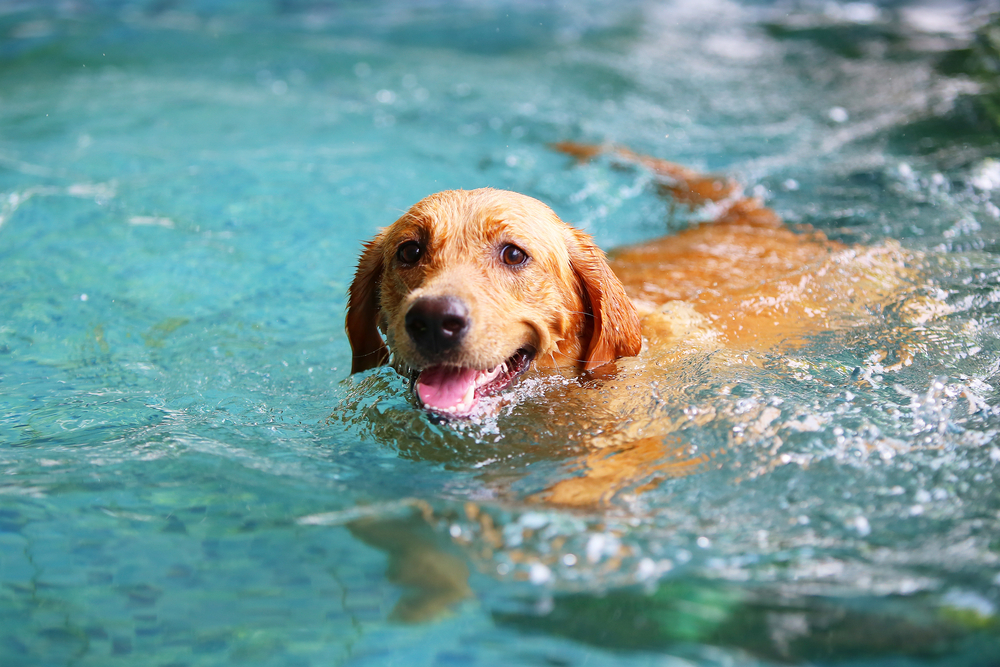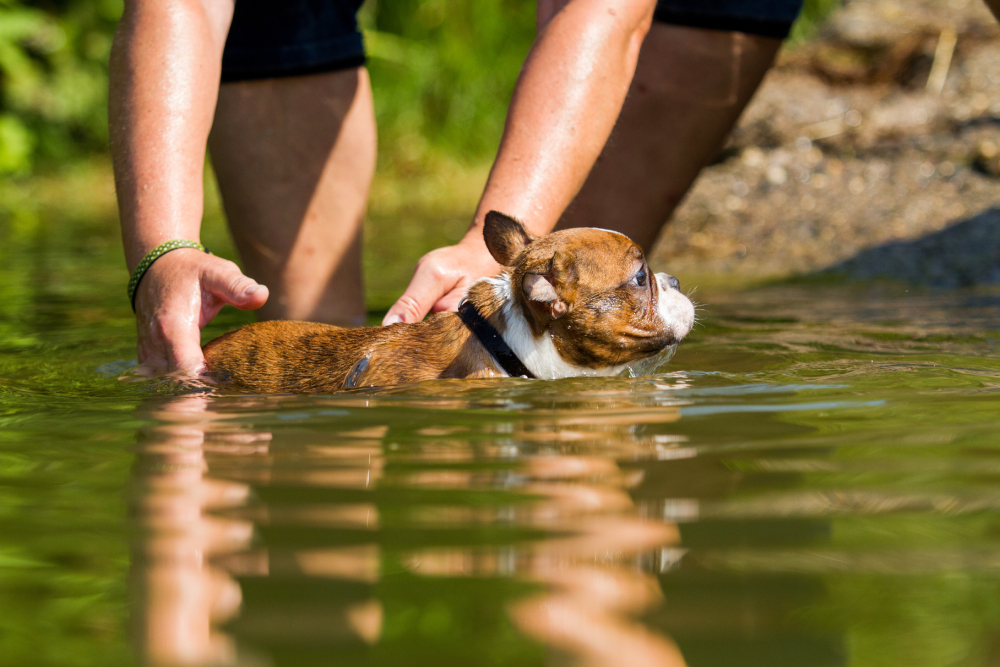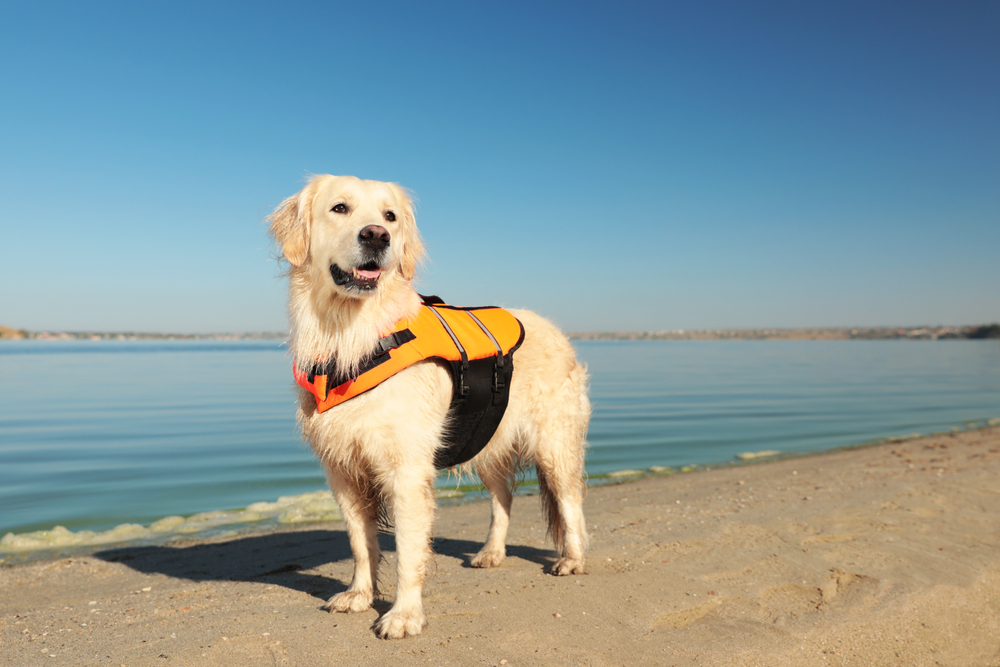
Purebred dogs were bred to have specific qualities to help them complete tasks efficiently and effectively. Certain dog breeds, such as the American Water Spaniel and the Portuguese Water Dog, were specifically bred to work in water and swim. These types of dogs have physical features that help them swim better than many other dog breeds. They also usually take to swimming quite naturally.
However, not all dogs will instinctively know how to swim or will end up enjoying swimming. Some dogs may require a little bit of training in order to swim confidently. Regardless of breed, it’s best to not assume that your dog can swim. Taking the time to teach your dog to swim in a safe environment will increase the likelihood of them enjoying the activity and learning to become stronger swimmers.


Do Dogs Need Training to Swim?
While certain dog breeds are known to be natural swimmers, the ability to swim depends on your dog’s individual preferences and experiences. Some dogs will love water, while others will prefer to stay dry. Dogs who have had early negative experiences with water are less likely to enjoy swimming, regardless of breed.
Considering all these factors, it’s best to expose dogs to water through training rather than assuming that they can swim. It’s better to play it safe and introduce your dog to kiddie pools and shallow bodies of water before taking them to a dog beach.


Why Can’t Some Dogs Swim?
Some dog breeds weren’t bred to swim, so they may not be interested in swimming or have difficulty with it. Some struggle to keep themselves afloat due to the physical build. For example, Pugs are known for not being the strongest swimmers. Their flat faces can make breathing difficult, they may be able to keep their head above water, but they usually won’t be able to swim for long periods of time, especially without a life vest. French Bulldogs also have flat faces and are top-heavy which can make it hard for them to swim and keep their heads and noses above water.
Dog breeds with shorter limbs may also have a more challenging time swimming. Breeds like Corgis, Dachshunds, Shih Tzus, and Basset Hounds often can’t swim for long and usually prefer wading in a shallow kiddie pool to keep cool.
Of course, there are exceptions, and some dogs of these breeds will love water and enjoy swimming. This makes it all the more important for dog owners to pay attention to their dog’s preferences and comfort levels to ensure their dogs have positive experiences with water. For safety, they should always be supervised around water and wear a life vest when in the water.
How Long Can a Dog Swim?
A dog’s ability to swim and stay afloat will depend on a variety of factors including their breed, age, and physical activity level. Your average dog will be able to swim for about 10 to 15 minutes before they need a break. Active dogs and athletes will be able to swim for about 20 to 30 minutes.
As your dog gains more experience with swimming, you’ll be able to know their limits and when they need to be taken out of a pool before they tire themselves out. Keep in mind that dogs must always be supervised when swimming, even if they’re experienced swimmers. Owners must pay attention to their dog’s state of being. If they show any signs of struggling to stay afloat, they must be taken out of the water immediately.




How Can I Train My Dog to Swim?
It’s best to introduce your dog to different levels of swimming in increments. Here are some ways you can help your dog become comfortable with water and enjoy swimming.
Start in a Shallow Pool
Bringing your puppy or new dog to a dog beach can backfire and be an overwhelming experience. It’s much more helpful for them to be exposed to something more manageable. You can set up a kiddie pool or fill your bathtub with water to help your puppy get used to the sensation of getting wet. The water should rest below their chest so that they can stand and move around without having to swim.


Progress Incrementally
As your dog gets used to the kiddie pool or bathtub, you can begin to raise the water level gradually until they’re starting to paddle around on their own. Once your dog is completely comfortable in this setting, you can transition them to a larger swimming pool. Start on the shallow end and slowly lead your dog to the deeper end. Always guide your dog and stand near them so that you can catch them quickly if they start to struggle with staying afloat.
Once your dog masters swimming in a pool, you can consider transitioning them to swimming at a dog beach or river. Make sure to start in a gentle spot that doesn’t have a strong current or powerful waves. This will help build your dog’s confidence and prevent them from feeling overwhelmed by the water.
Make Swimming a Positive Experience
It’s important to keep swimming a positive experience. Bad experiences with water can have a negative effect on your dog’s confidence and discourage them from swimming. Therefore, always put your dog in situations that are manageable for them, and don’t force them to make big jumps in their progress.
Another way you can make swimming positive for dogs is to incorporate treats and toys. You can give your dog treats every time they come out of the water to develop a happy association with swimming. Your dog may also find swimming to be more enjoyable if you play fetch with them in the water.
Don’t forget to stay positive and encouraging while your dog’s learning to swim. Praise and encouragement will be strong motivators for your dog, and they’ll appreciate all the support that they can get.


Use a Dog Life Vest
Make sure to invest in a high-quality dog life vest. Life vests can help dogs learn to swim more quickly by helping them stay afloat while they learn to paddle. Just keep in mind that loose life vests can become safety hazards and put your dog at risk of drowning. So, make sure that the life vest is always well-fitted so that your dog can’t slip out of it.


Conclusion
It’s important for dogs to feel confident while swimming. Therefore, it’s much more effective to start your dog in a kiddie pool and gradually work your way to the dog beach. This will make swimming a fun and positive experience for them, and it gives them time to train their muscles to become stronger swimmers.
Of course, not all dogs will enjoy swimming. So, if your dog just isn’t interested or dislikes being in the water, it’s best to move on to other activities and let them engage in exercises they truly enjoy.
Featured Image Credit: Wasitt Hemwarapornchai, Shutterstock



